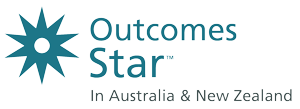The Outcomes Star Journey of Change (JoC) identifies five main stages that people can go through in the journey from chaos or dependency to self-reliance.
Each stage requires different – though overlapping – types of service provision. Commissioners can use this journey as a framework for planning services and in their service specifications to ensure services are available for vulnerable people at each stage and to achieve the outcome of moving people to the next stage.
Stages on the Star Journey of Change and their intended outcomes and examples of service types.
Stuck (1-2)
- Intended outcomes include: prevention of worse harm; reduce impact on community and move people to accepting help.
- Service types include: informal drop-in services providing basic services (e.g. food); mandatory engagement (e.g. via probation); night shelters; outreach and some hostels.
Accepting help (3-4)
- Intended outcomes include: Sorting out practical issues (e.g. benefits, health needs); engagement in activities and encouraging the move to taking responsibility
- Service types may include: hostels or day and community services with voluntary access but which are able to accommodate chaotic people and erratic attendance.
Believing (5-6)
- Intended outcomes could include: service users making real changes in their lives and reducing or preventing relapse
- Services include: support supported housing with a high level of support; counselling and support with training; volunteering and employment.
Learning (7-8)
- Intended outcomes could include: achieving qualifications; maximising independent living situation; integration in community and maintenance
- Services may include: supported housing with a low level of support; floating support; support with training, volunteering and employment.
Self-reliance (9-10)
- Intended outcomes could include: achieving qualifications; maximising independent living situation; integration in community and maintenance but with little or no support from specialist services
- Service types may include: low level floating support; drop in services; self-help and user-led groups.





